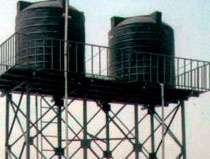Welcome
Basic Irrigation Guidelines
Basic irrigation guidelines
• Germinating seeds and seedlings after transplanting need
to be kept uniformly moist.
• Developing plants need to be watered deeply, but less
often, to encourage deep root growth. Frequent, shallow
watering promotes superficial root development. Such
plants will be susceptible to drought. Water to a depth of
about half a foot; then let the surface dry out to a depth of
one or two inches (3 to 5 cm) before irrigating again.
• Shallow rooting crops such as green beans or onions
draw water from the top soil. They should be soaked
thoroughly, but irrigated again only when they show signs
of needing additional water such as wilting during the
hottest time of the day.
• Deep rooting plants (e.g. maize, tomatoes or asparagus)
can draw water from 2 feet down. They need water less
frequently, but more water each time to moisten the soil
deeply.
• Observe your plants every day, and respond promptly if
they show signs of needing water! Postponing irrigation
can damage plants very quickly, especially in hot
weather.
• During dry, hot, and windy weather, plants need more
water than during humid and cloudy conditions, as the
soil dries out faster.
• Avoid also over-watering. Plants can drown in very wet
soil when their roots are left without oxygen.
• Check the soil to see how deep the moisture goes. The
surface may look dry while the rooting zone is still wet.
• Sandy soils need more water because water can drain
twice as fast through sand than through clay.
• Mulches are very beneficial as they conserve soil moisture reducing the amount of water needed. They also suppress weed growth.
 |
 |
 |










